How to Change the Language of Your Computer (Windows XP)
Part 1 of 2:
Display Language
-
 Try a Language Pack. The Microsoft website offers a variety of Language Packs that you can install without having to reinstall Windows. You'll need to have Service Pack 3 installed in order to use these language packs.
Try a Language Pack. The Microsoft website offers a variety of Language Packs that you can install without having to reinstall Windows. You'll need to have Service Pack 3 installed in order to use these language packs.- Click here and look for your language in the list. If the language you want is listed, and you are currently using the required base language, click the "Get it now" link to download the pack. If your desired language is not listed, or you aren't using the right base language, see the next step.
- Run the downloaded installer and follow the prompts to install the pack. Once the installation is complete, you'll see your changes take effect after restarting.
-
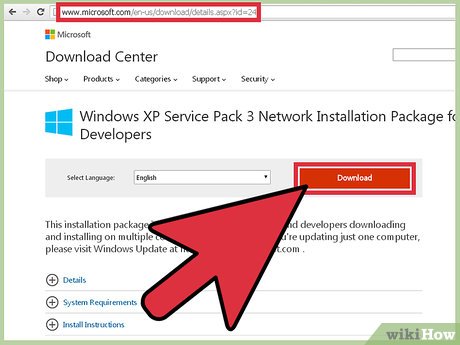 Understand the process. While it is not technically possible to change the base language without reinstalling Windows, you can use a workaround to change the majority of the interface to your desired language. This requires downloading the Service Pack 3 update (even if you already have it installed) as well as changing a few registry values.
Understand the process. While it is not technically possible to change the base language without reinstalling Windows, you can use a workaround to change the majority of the interface to your desired language. This requires downloading the Service Pack 3 update (even if you already have it installed) as well as changing a few registry values. -
 Download the Service Pack 3 update in the language that you want to change to. Visit the Service Pack 3 download page here. Use the drop-down menu to select the language that you want to change to. Once you've selected the language, click the "Download" button and then select the second option in the window that appears. Ignore the additional options and click the blue button in the lower-right corner to download the file.
Download the Service Pack 3 update in the language that you want to change to. Visit the Service Pack 3 download page here. Use the drop-down menu to select the language that you want to change to. Once you've selected the language, click the "Download" button and then select the second option in the window that appears. Ignore the additional options and click the blue button in the lower-right corner to download the file.- Do not start installing the SP3 update yet. It won't work until you've changed the registry.
-
 Open the Registry Editor. To change your language, you'll need to make a small change to your system registry. The registry is what controls Windows, so be careful when making changes here.
Open the Registry Editor. To change your language, you'll need to make a small change to your system registry. The registry is what controls Windows, so be careful when making changes here.- To open the Registry Editor, press ⊞ Win+R, type regedit, and press ↵ Enter.
-
 Use the tree on the left to navigate. you can expand the folders to see subfolders. Selecting a folder will display any keys it contains in the right frame.
Use the tree on the left to navigate. you can expand the folders to see subfolders. Selecting a folder will display any keys it contains in the right frame.- Navigate to HKEY_LOCAL_MACHINE/SYSTEM/ControlSet001/Control/NIs/Language.
-
 Double-click the "(Default)" key. This should be at the top of the list. A new window will appear, allowing you to change the value.
Double-click the "(Default)" key. This should be at the top of the list. A new window will appear, allowing you to change the value. -
 Enter in the code for the language you want to use. Each language has a four-digit code that you'll need to enter into the "Value data" field. Refer to the list below to find the language you want to change to and enter the proper code. Make sure that it is the same language you selected for the SP3 file.[1]
Enter in the code for the language you want to use. Each language has a four-digit code that you'll need to enter into the "Value data" field. Refer to the list below to find the language you want to change to and enter the proper code. Make sure that it is the same language you selected for the SP3 file.[1]Language Codes
- 0436 = 'af;Afrikaans'
- 041C = 'sq;Albanian'
- 0001 = 'ar;Arabic'
- 0401 = 'ar-sa;Arabic (Saudi Arabia)'
- 0801 = 'ar-iq;Arabic (Iraq)'
- 0C01 = 'ar-eg;Arabic (Egypt)'
- 1001 = 'ar-ly;Arabic (Libya)'
- 1401 = 'ar-dz;Arabic (Algeria)'
- 1801 = 'ar-ma;Arabic (Morocco)'
- 1C01 = 'ar-tn;Arabic (Tunisia)'
- 2001 = 'ar-om;Arabic (Oman)'
- 2401 = 'ar-ye;Arabic (Yemen)'
- 2801 = 'ar-sy;Arabic (Syria)'
- 2C01 = 'ar-jo;Arabic (Jordan)'
- 3001 = 'ar-lb;Arabic (Lebanon)'
- 3401 = 'ar-kw;Arabic (Kuwait)'
- 3801 = 'ar-ae;Arabic (you.A.E.)'
- 3C01 = 'ar-bh;Arabic (Bahrain)'
- 4001 = 'ar-qa;Arabic (Qatar)'
- 042D = 'eu;Basque'
- 0402 = 'bg;Bulgarian'
- 0423 = 'be;Belarusian'
- 0403 = 'ca;Catalan'
- 0004 = 'zh;Chinese'
- 0404 = 'zh-tw;Chinese (Taiwan)'
- 0804 = 'zh-cn;Chinese (China)'
- 0C04 = 'zh-hk;Chinese (Hong Kong SAR)'
- 1004 = 'zh-sg;Chinese (Singapore)'
- 041A = 'hr;Croatian'
- 0405 = 'cs;Czech'
- 0406 = 'the;Danish'
- 0413 = 'nl;Dutch (Netherlands)'
- 0813 = 'nl-be;Dutch (Belgium)'
- 0009 = 'en;English'
- 0409 = 'en-us;English (United States)'
- 0809 = 'en-gb;English (United Kingdom)'
- 0C09 = 'en-au;English (Australia)'
- 1009 = 'en-ca;English (Canada)'
- 1409 = 'en-nz;English (New Zealand)'
- 1809 = 'en-ie;English (Ireland)'
- 1C09 = 'en-za;English (South Africa)'
- 2009 = 'en-jm;English (Jamaica)'
- 2809 = 'en-bz;English (Belize)'
- 2C09 = 'en-tt;English (Trinidad)'
- 0425 = 'et;Estonian'
- 0438 = 'fo;Faeroese'
- 0429 = 'fa;Farsi'
- 040B = 'fi;Finnish'
- 040C = 'fr;French (France)'
- 080C = 'fr-be;French (Belgium)'
- 0C0C = 'fr-ca;French (Canada)'
- 100C = 'fr-ch;French (Switzerland)'
- 140C = 'fr-lu;French (Luxembourg)'
- 043C = 'gd;Gaelic'
- 0407 = 'de;German (Germany)'
- 0807 = 'de-ch;German (Switzerland)'
- 0C07 = 'de-at;German (Austria)'
- 1007 = 'de-lu;German (Luxembourg)'
- 1407 = 'de-li;German (Liechtenstein)'
- 0408 = 'el;Greek'
- 040D = 'he;Hebrew'
- 0439 = 'hi;Hindi'
- 040E = 'hu;Hungarian'
- 040F = 'is;Icelandic'
- 0421 = 'in;Indonesian'
Language Codes
- 0410 = 'it;Italian (Italy)'
- 0810 = 'it-ch;Italian (Switzerland)'
- 0411 = 'ja;Japanese'
- 0412 = 'ko;Korean'
- 0426 = 'lv;Latvian'
- 0427 = 'lt;Lithuanian'
- 042F = 'mk;FYRO Macedonian'
- 043E = 'ms;Malay (Malaysia)'
- 043A = 'mt;Maltese'
- 0414 = 'no;Norwegian (Bokmal)'
- 0814 = 'no;Norwegian (Nynorsk)'
- 0415 = 'pl;Polish'
- 0416 = 'pt-br;Portuguese (Brazil)'
- 0816 = 'pt;Portuguese (Portugal)'
- 0417 = 'rm;Rhaeto-Romanic'
- 0418 = 'ro;Romanian'
- 0818 = 'ro-mo;Romanian (Moldova)'
- 0419 = 'ru;Russian'
- 0819 = 'ru-mo;Russian (Moldova)'
- 0C1A = 'sr;Serbian (Cyrillic)'
- 081A = 'sr;Serbian (Latin)'
- 041B = 'sk;Slovak'
- 0424 = 'sl;Slovenian'
- 042E = 'sb;Sorbian'
- 040A = 'es;Spanish (Traditional Sort)'
- 080A = 'es-mx;Spanish (Mexico)'
- 0C0A = 'es;Spanish (International Sort)'
- 100A = 'es-gt;Spanish (Guatemala)'
- 140A = 'es-cr;Spanish (Costa Rica)'
- 180A = 'es-pa;Spanish (Panama)'
- 1C0A = 'es-do;Spanish (Dominican Republic)'
- 200A = 'es-ve;Spanish (Venezuela)'
- 240A = 'es-co;Spanish (Colombia)'
- 280A = 'es-pe;Spanish (Peru)'
- 2C0A = 'es-ar;Spanish (Argentina)'
- 300A = 'es-ec;Spanish (Ecuador)'
- 340A = 'es-cl;Spanish (Chile)'
- 380A = 'es-uy;Spanish (Uruguay)'
- 3C0A = 'es-py;Spanish (Paraguay)'
- 400A = 'es-bo;Spanish (Bolivia)'
- 440A = 'es-sv;Spanish (El Salvador)'
- 480A = 'es-hn;Spanish (Honduras)'
- 4C0A = 'es-ni;Spanish (Nicaragua)'
- 500A = 'es-pr;Spanish (Puerto Rico)'
- 0430 = 'sx;Sutu'
- 041D = 'sv;Swedish'
- 081D = 'sv-fi;Swedish (Finland)'
- 041E = 'th;Thai'
- 0431 = 'ts;Tsonga'
- 0432 = 'tn;Tswana'
- 041F = 'tr;Turkish'
- 0422 = 'uk;Ukrainian'
- 0420 = 'your;Urdu'
- 042A = 'vi;Vietnamese'
- 0434 = 'xh;Xhosa'
- 043D = 'ji;Yiddish'
- 0435 = 'zu;Zulu'
-
 Repeat the process for the "InstallLanguage" key. This can usually be found at the bottom of the list of keys. Use the same code that you used for the "(Default)" key.
Repeat the process for the "InstallLanguage" key. This can usually be found at the bottom of the list of keys. Use the same code that you used for the "(Default)" key. -
 Close the Registry Editor and restart your computer. You must restart before you proceed, or the Service Pack 3 installation will not work.
Close the Registry Editor and restart your computer. You must restart before you proceed, or the Service Pack 3 installation will not work. -
 Run the Service Pack 3 installer after restarting. Once you have rebooted your computer, run the Service Pack 3 installation. It doesn't matter if you already have Service Pack 3 installed, as the installer will just overwrite the system files with the new ones in the correct language. Follow the prompts to install the Service Pack.
Run the Service Pack 3 installer after restarting. Once you have rebooted your computer, run the Service Pack 3 installation. It doesn't matter if you already have Service Pack 3 installed, as the installer will just overwrite the system files with the new ones in the correct language. Follow the prompts to install the Service Pack. -
 Reboot your computer again after installing Service Pack 3. After the installation is complete, you'll need to reboot your computer for the changes to take effect. Once the computer has rebooted, you should be able to see the changes to your display language.
Reboot your computer again after installing Service Pack 3. After the installation is complete, you'll need to reboot your computer for the changes to take effect. Once the computer has rebooted, you should be able to see the changes to your display language.- You may notice that some elements are still in the original language. This is a limitation of the workaround. The only way to completely display a different language is to reinstall Windows XP and select the correct language during installation.
-
 Download a Language Pack after changing your base language (optional). If you performed the above steps to change your base language in order to install a Language Pack, you can download and install it now. See Step 1 of this section for details.
Download a Language Pack after changing your base language (optional). If you performed the above steps to change your base language in order to install a Language Pack, you can download and install it now. See Step 1 of this section for details.
Part 2 of 2:
Input Language
-
 Open the Control Panel. You can find this in the Start Menu. For older versions of Windows XP, select "Settings" to see the Control Panel option.
Open the Control Panel. You can find this in the Start Menu. For older versions of Windows XP, select "Settings" to see the Control Panel option. -
 Select "Date, Time, Language, and Regional Options". If you are using Classic View, select "Regional and Language Options".
Select "Date, Time, Language, and Regional Options". If you are using Classic View, select "Regional and Language Options". -
 Click the "Languages" tab. This will allow you to change the options for your input language.
Click the "Languages" tab. This will allow you to change the options for your input language.- If you are switching inputs to an East Asian language or a complex script language, check the appropriate boxes and click "Apply" to download the required extra files.
-
 Click the "Details" button. This will open the Text Services and Languages Input menu.
Click the "Details" button. This will open the Text Services and Languages Input menu. -
 Click the "Add" button. Select your desired input and language and keyboard layout from the drop-down menus. Click "OK" when you're satisfied.
Click the "Add" button. Select your desired input and language and keyboard layout from the drop-down menus. Click "OK" when you're satisfied. -
 Select your new default language from the drop-down menu. Your newly-added language will appear as an option in the "Default input language" drop-down menu. Select it if you want to change your input language now. Click "Apply" to save your changes.
Select your new default language from the drop-down menu. Your newly-added language will appear as an option in the "Default input language" drop-down menu. Select it if you want to change your input language now. Click "Apply" to save your changes. -
 Use the Language Bar to switch between installed input languages. The Language Bar will appear automatically when you have more than one input language installed. You can find it in your taskbar, next to the system tray. Click the active language to see a list of all your installed input languages.[2]
Use the Language Bar to switch between installed input languages. The Language Bar will appear automatically when you have more than one input language installed. You can find it in your taskbar, next to the system tray. Click the active language to see a list of all your installed input languages.[2]- You can also press Left-Alt+⇧ Shift to cycle between your installed languages.
5 ★ | 1 Vote
You should read it
- Vietnamese translation for Windows 10
- Spanish football schedule 2018/19
- Let's admire inside the world's most luxurious aircraft
- The secret to effective language learning from a 35-year-old man who speaks 11 languages
- Overview of R language, install R on Windows and Linux
- Instructions on how to pack traditional, beautiful square cakes for Tet
- How to install Vietnamese interface for Microsoft Office 2010
- Overview of Windows XP Service Pack 3
May be interested
- Enable / disable the Language bar on Windows 10
 the language bar is used to quickly change the keyboard layout or input language without having to navigate to control panel or settings.
the language bar is used to quickly change the keyboard layout or input language without having to navigate to control panel or settings. - How to Change the Language in Windows 7
 windows 7 allows you to change the display language for most of the interface. the process is fairly straightforward and the most comprehensive if you have windows 7 ultimate or enterprise. if you are using windows 7 starter, basic, or...
windows 7 allows you to change the display language for most of the interface. the process is fairly straightforward and the most comprehensive if you have windows 7 ultimate or enterprise. if you are using windows 7 starter, basic, or... - Instructions to change the Zalo language on Android and iPhone phones
 you want to change the zalo language on your android device, iphone but don't know how to change it? then refer to the article below to reset the installation in your preferred language.
you want to change the zalo language on your android device, iphone but don't know how to change it? then refer to the article below to reset the installation in your preferred language. - How to change the language for Cortana in Windows 10
 cortana is a cloud-based personal assistant that works on microsoft devices and many other services. cortana can provide a range of features, some of which are personalized.
cortana is a cloud-based personal assistant that works on microsoft devices and many other services. cortana can provide a range of features, some of which are personalized. - How to change the application language on iPhone, iPad
 apple's ios 13 turns iphones and ipads into multilingual devices. now you can change the language of an individual application without changing the main system language. each application can set its own language.
apple's ios 13 turns iphones and ipads into multilingual devices. now you can change the language of an individual application without changing the main system language. each application can set its own language. - How to install Chinese keyboard on Windows
 when installing chinese keyboard on windows computer, you will easily learn chinese on your computer and can type chinese on your computer.
when installing chinese keyboard on windows computer, you will easily learn chinese on your computer and can type chinese on your computer. - How to change language for apps on Android
 besides setting up language changes for applications on iphone, you can also choose another language for applications on android without affecting the system language or other applications.
besides setting up language changes for applications on iphone, you can also choose another language for applications on android without affecting the system language or other applications. - How to change the language on Firefox
 how to change the language on firefox. some of you when installing firefox but the display language is english or even french makes it difficult for us to use. in this article tipsmake.com will guide
how to change the language on firefox. some of you when installing firefox but the display language is english or even french makes it difficult for us to use. in this article tipsmake.com will guide - How to change the language on Coc Coc browser
 by coc coc browser by default, the language used by the browser will be vietnamese. but what if you want to add another language to the browser?
by coc coc browser by default, the language used by the browser will be vietnamese. but what if you want to add another language to the browser? - Do you know what programming language is?
 programming language is a type of computer language used to develop software programs, scripts, or standardization under a system of specific rules for computer execution.
programming language is a type of computer language used to develop software programs, scripts, or standardization under a system of specific rules for computer execution.








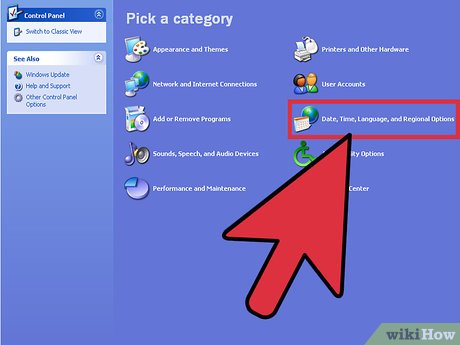

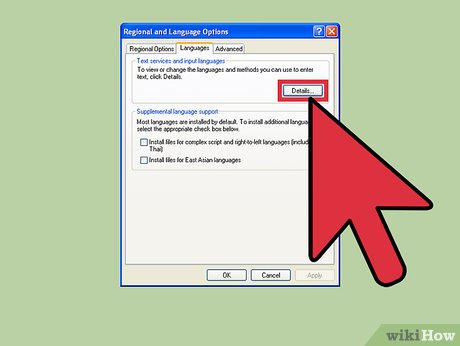
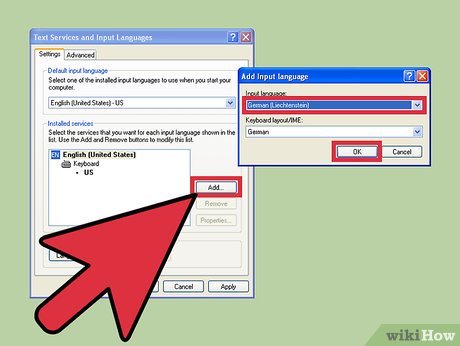
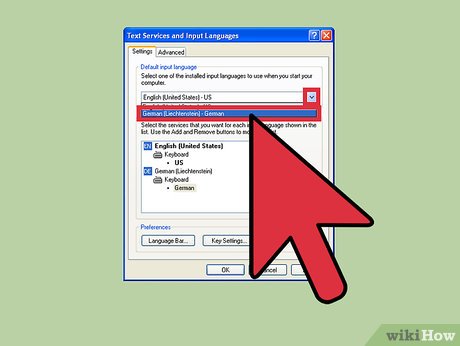











 How to Modernize Windows XP
How to Modernize Windows XP How to Remove Hiberfil.Sys from XP
How to Remove Hiberfil.Sys from XP How to Prepare for the Last Day of Support for Windows XP
How to Prepare for the Last Day of Support for Windows XP How to Run Windows XP System Maintenance With Automated Scripts
How to Run Windows XP System Maintenance With Automated Scripts How to Set a Schedule on a Buffalo LinkStation
How to Set a Schedule on a Buffalo LinkStation How to Set up Remote Desktop Web Connection with Windows XP
How to Set up Remote Desktop Web Connection with Windows XP